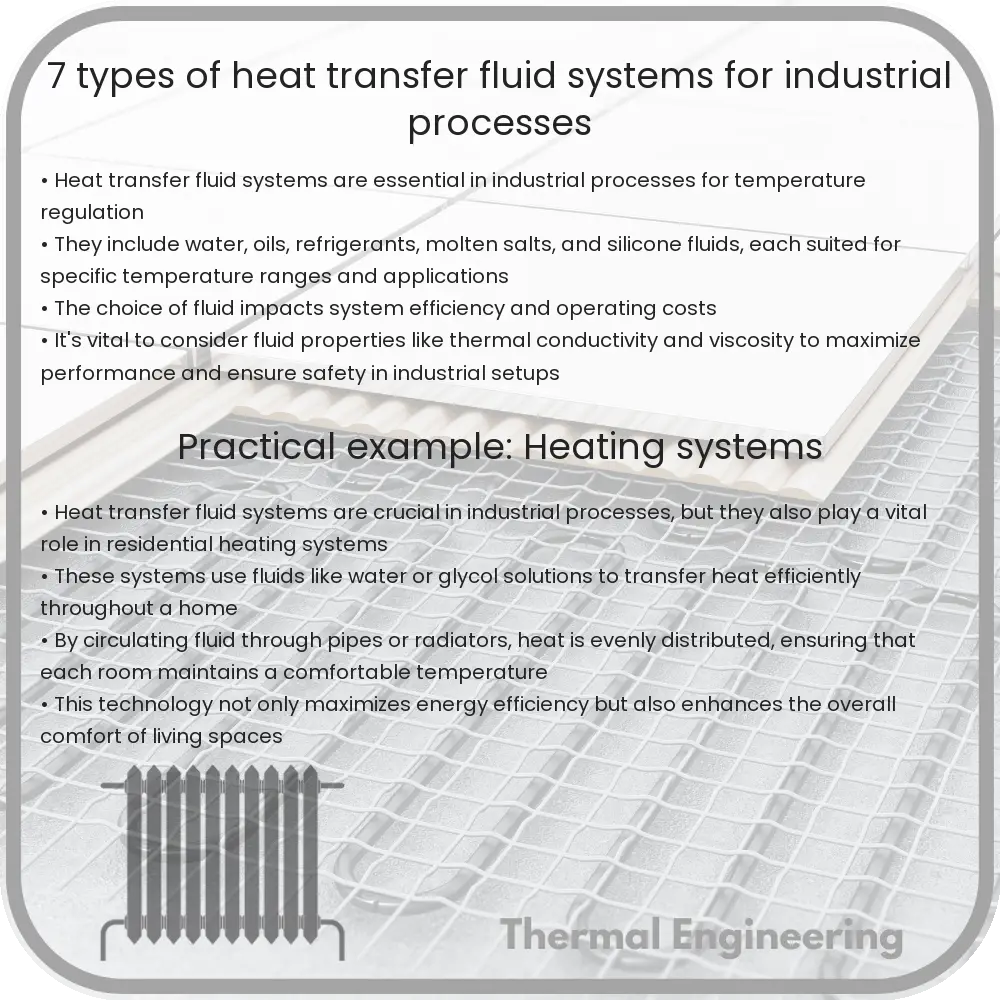Explore the seven common types of heat transfer fluid systems used in industrial processes for effective thermal energy management.

7 Types of Heat Transfer Fluid Systems for Industrial Processes
Heat transfer fluid systems are essential components in numerous industrial processes. They facilitate the transfer of thermal energy for heating, cooling, and maintaining precise temperatures in production cycles. Understanding the different types of heat transfer fluid systems can help industries optimize their operations and improve efficiency. Here are seven common types of these systems:
- Oil-Based Systems
Oil-based heat transfer fluids are popular due to their high boiling points and excellent thermal stability. These systems generally use mineral or synthetic oils and are ideal for processes that require high-temperature operation, typically up to 320°C. - Water-Based Systems
Water is one of the most common heat transfer fluids due to its high heat capacity and low cost. Water-based systems are usually operational under 100°C. For higher temperatures, water is often mixed with additives like glycols to prevent freezing and corrosion. - Glycol-Based Systems
Ethylene and propylene glycol solutions are used in systems where freeze protection and low toxicity are critical. These systems are suited for operations ranging from -50°C to 200°C, making them ideal for both cooling and heating applications. - Refrigerants
Refrigerants are commonly used in cooling systems, such as air conditioners and refrigerators. They operate by absorbing heat at low temperatures and pressures and then releasing it at higher temperatures and pressures. Common refrigerants include hydrochlorofluorocarbons (HCFCs), hydrofluorocarbons (HFCs), and natural options like ammonia. - Molten Salts
Molten salts are often used in high temperature processes, typically ranging from 100°C to 1000°C. They excel in storing heat energy, which makes them perfect for solar power plants and some types of manufacturing processes where heat storage is beneficial. - Thermal Oil Systems
Thermal oil systems use specially designed synthetic or natural oils that can operate at very high temperatures without exceeding their boiling point. These fluids provide stable, uniform heat and can operate at temperatures up to 400°C. - Silicone-Based Fluids
Silicone-based fluids are used for their wide operational temperature range and low thermal conductivity. They are particularly effective in systems requiring stable heat transfer over a broad temperature range, from -100°C to 250°C.
Each type of heat transfer fluid system comes with its set of advantages and suitability for specific industrial processes. The choice of fluid often depends on factors such as temperature range, thermal stability, corrosion resistance, and environmental impact. Proper maintenance and regular checks are crucial to ensure the efficiency and longevity of these systems.
By choosing the correct heat transfer fluid, industries can achieve more reliable, efficient, and cost-effective operations. This not only helps in maintaining product quality and safety but also contributes significantly to energy conservation and sustainability efforts.